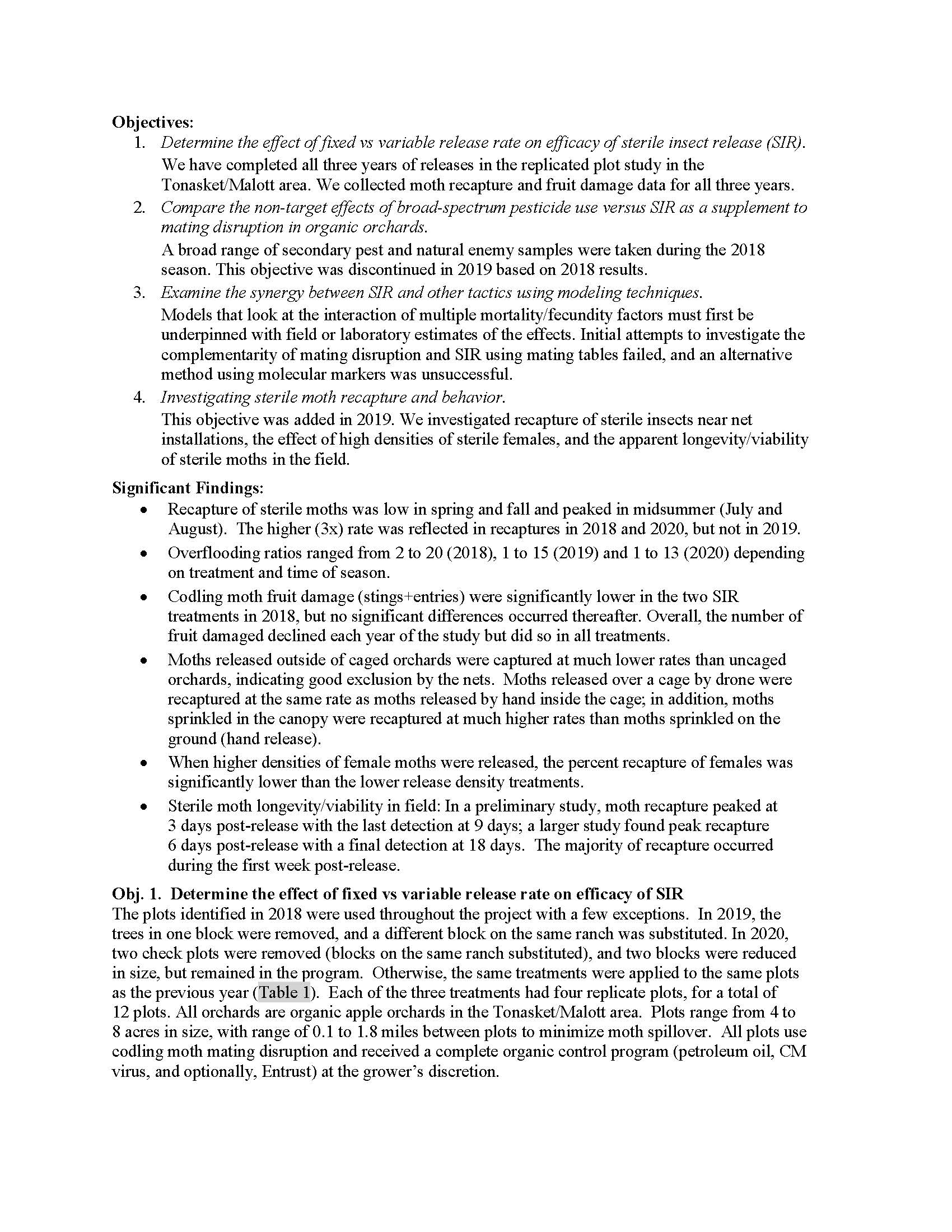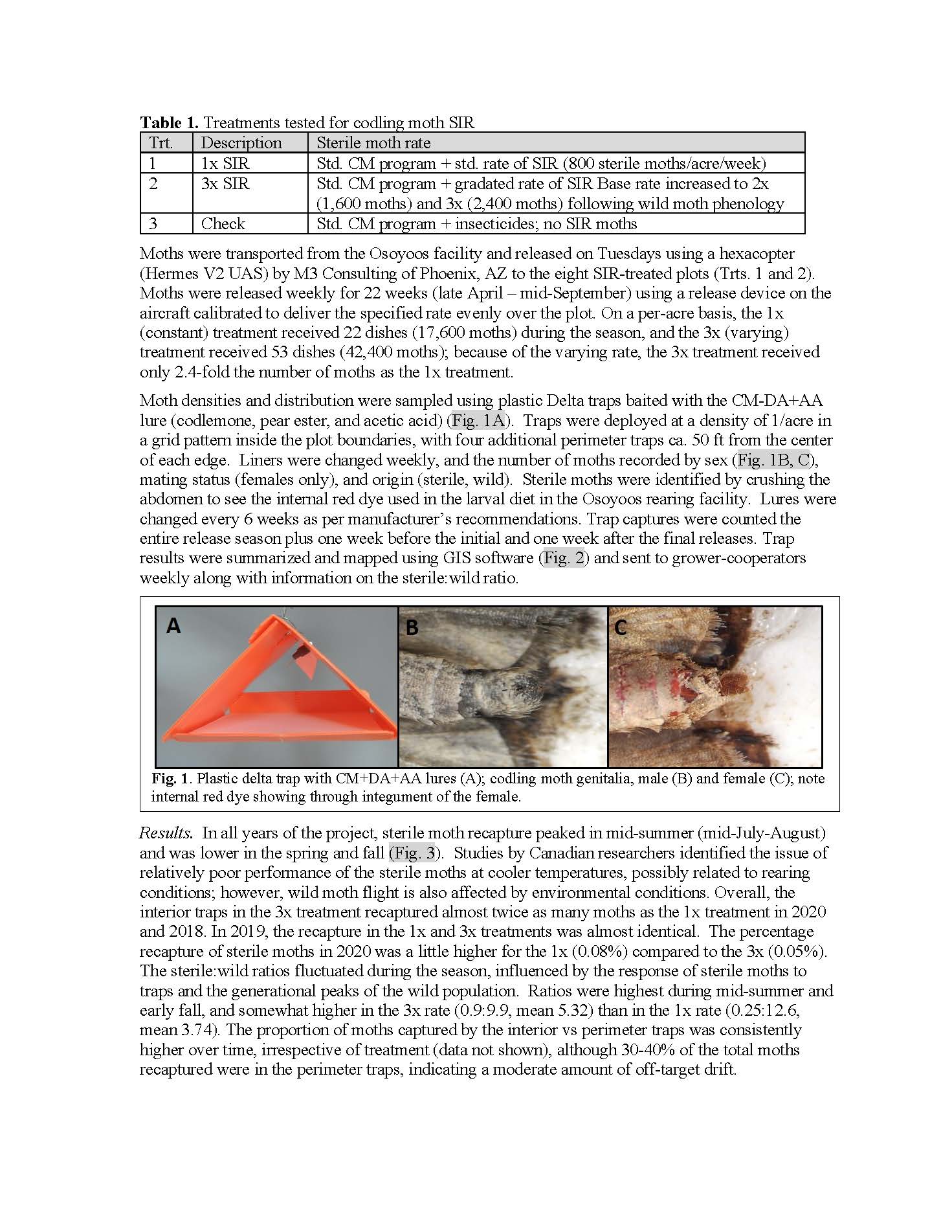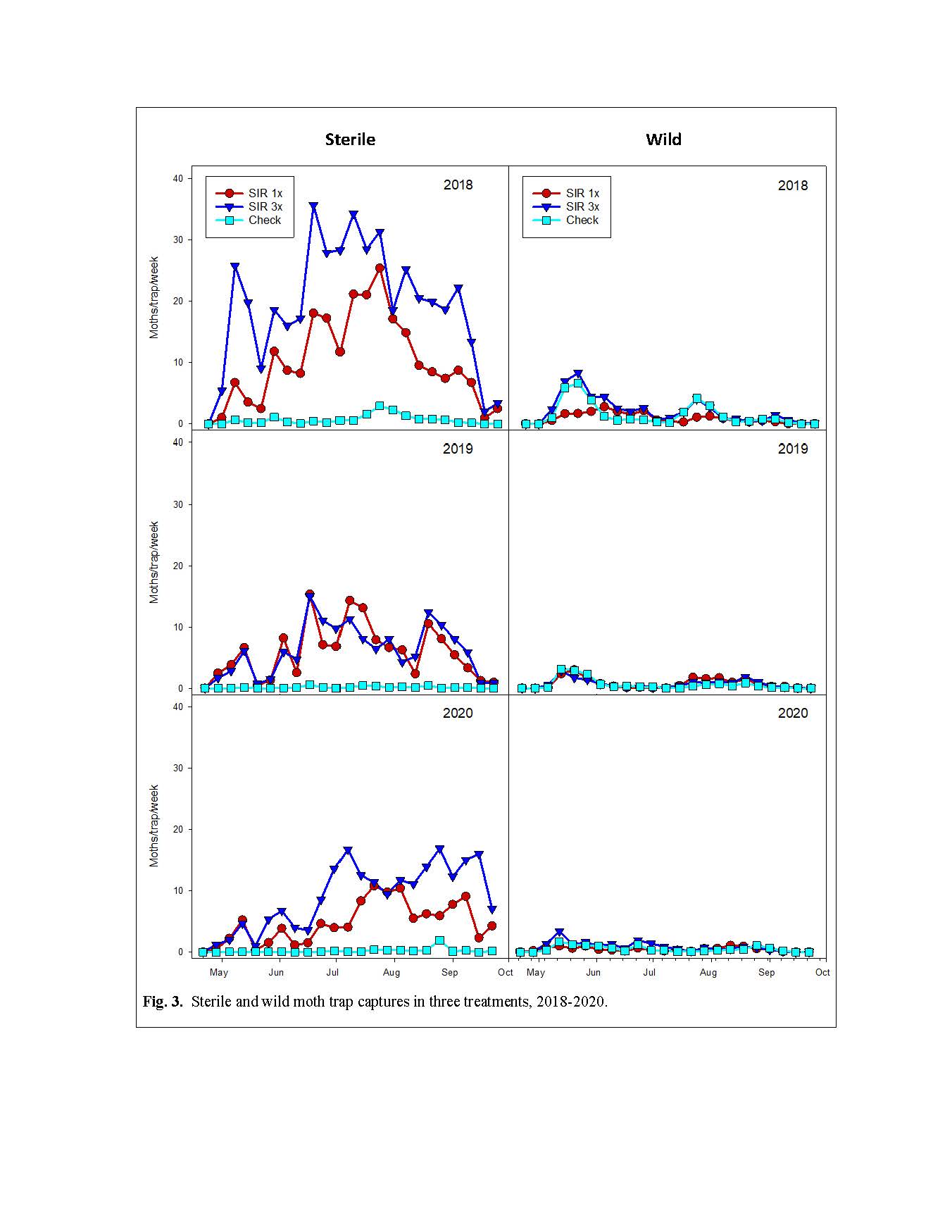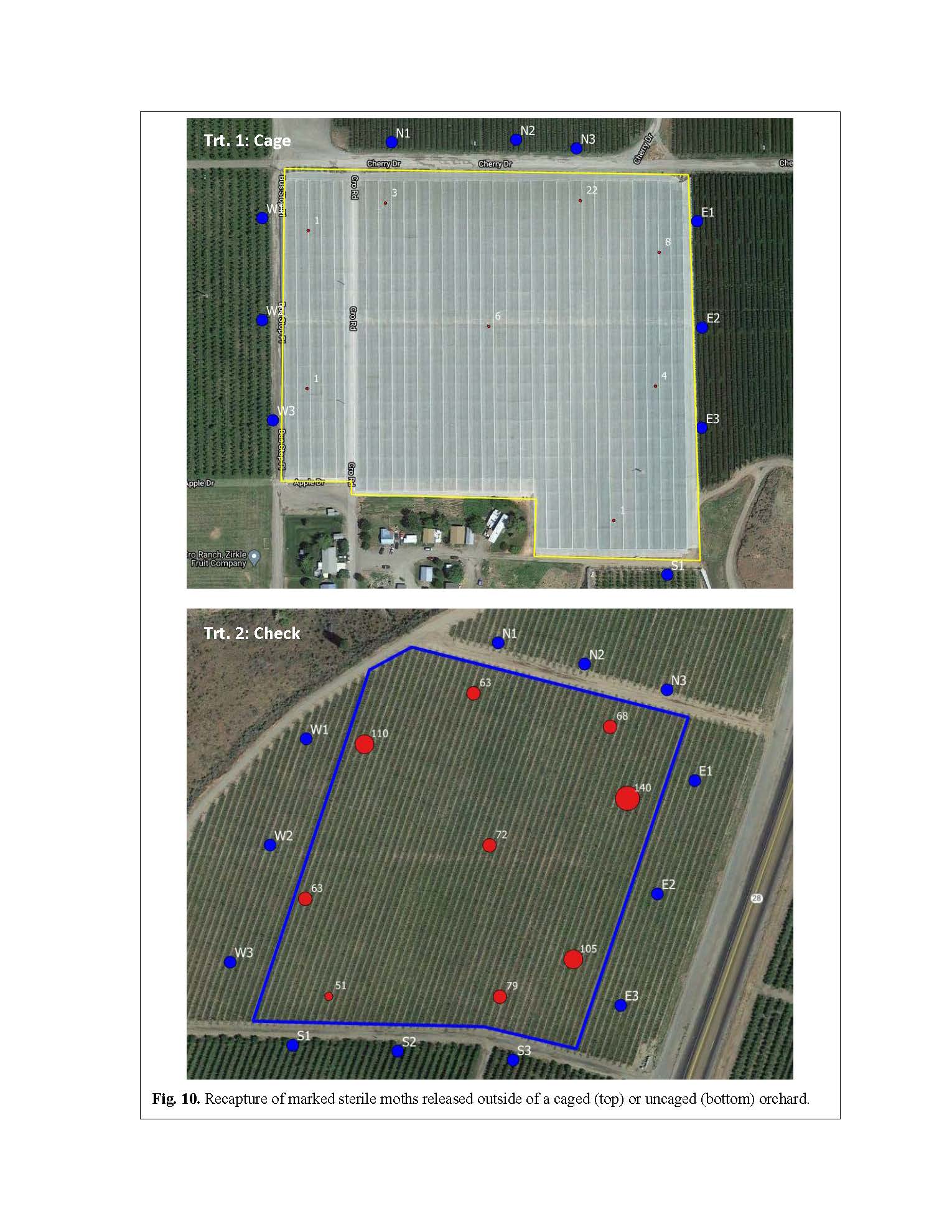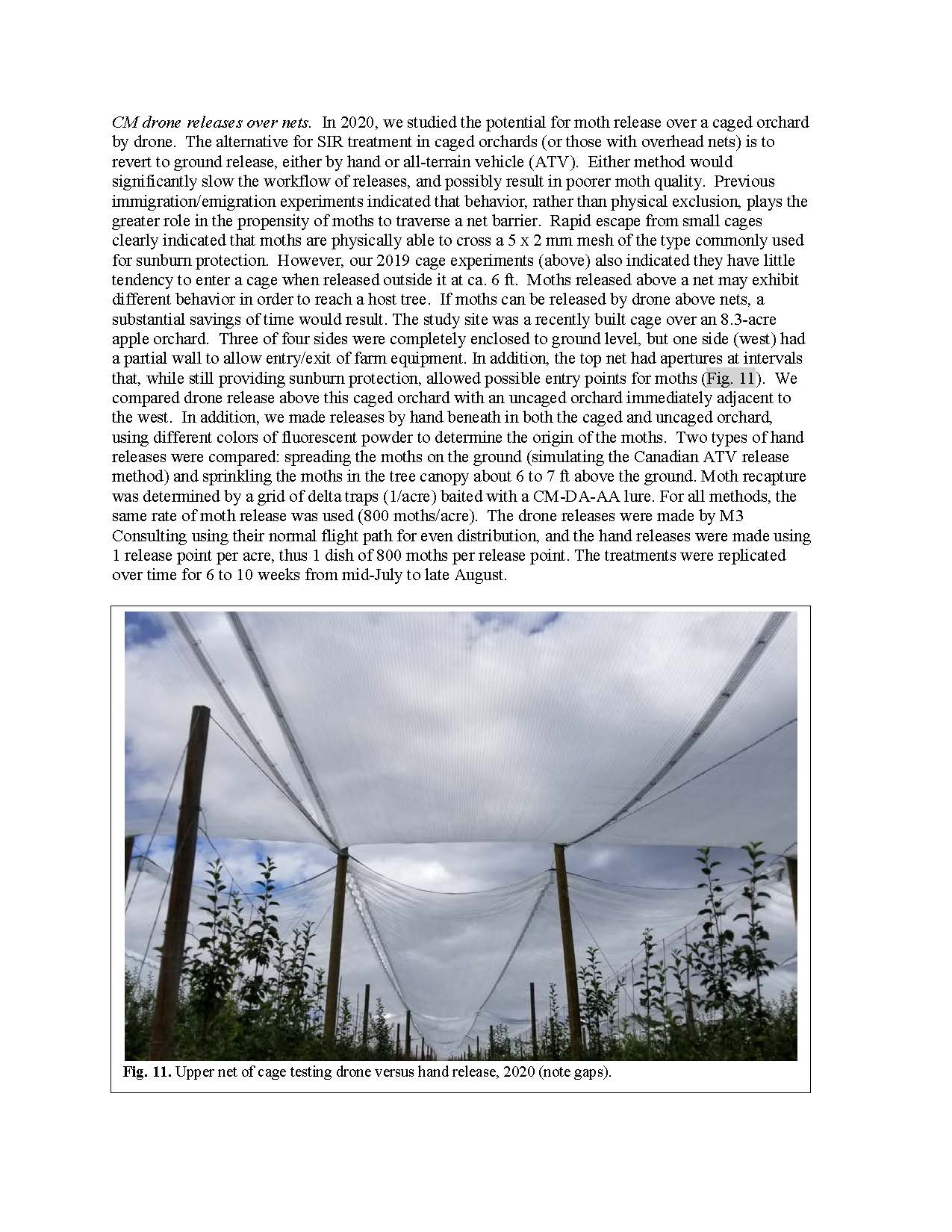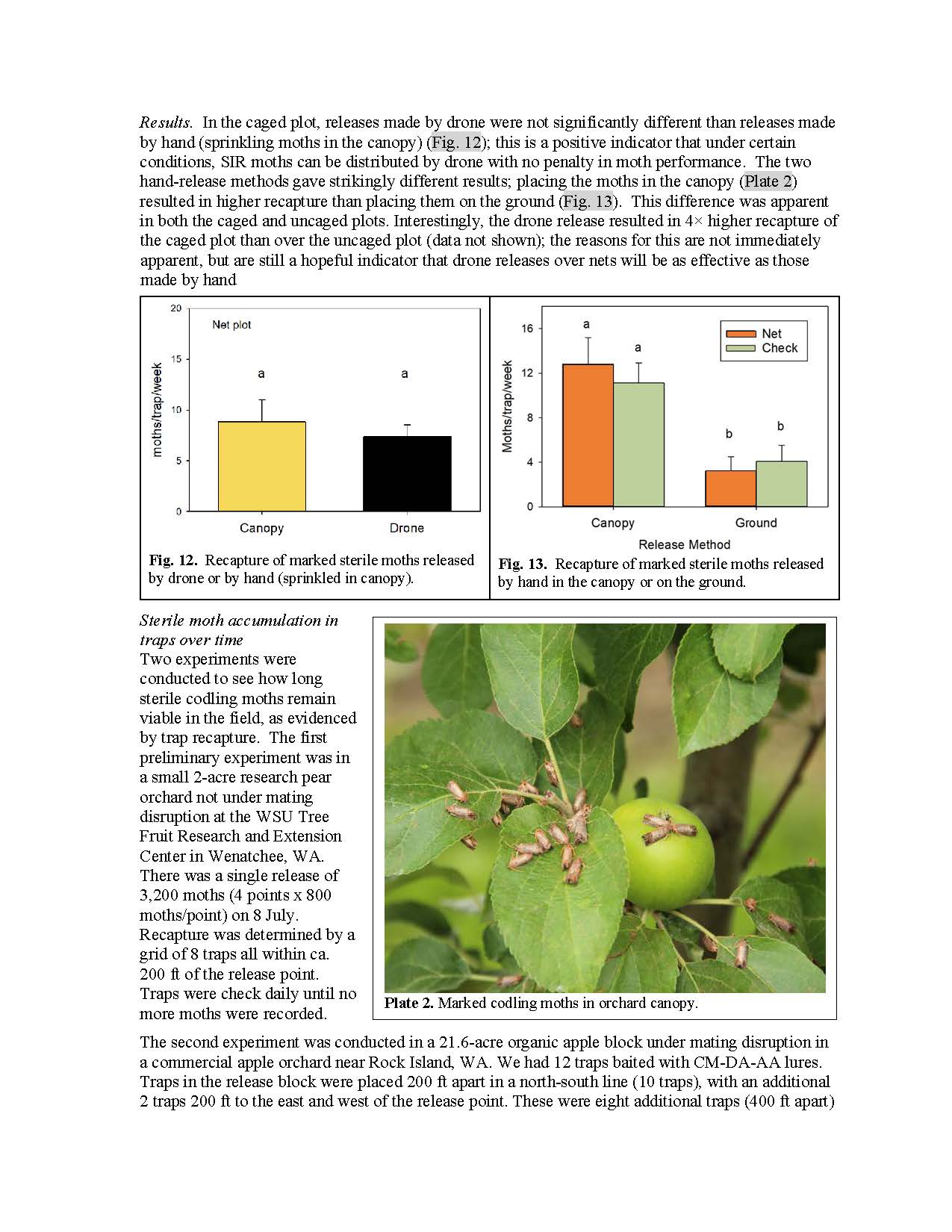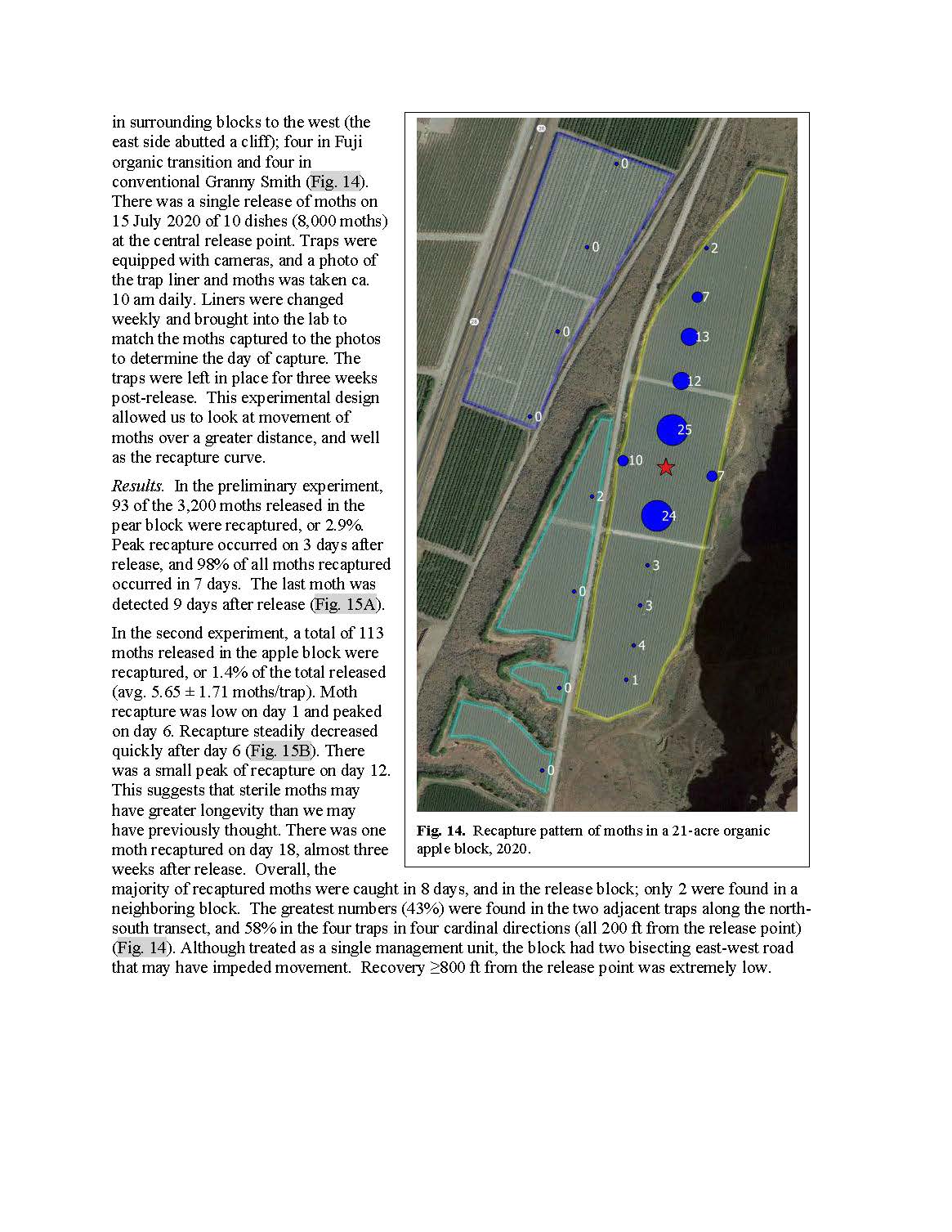Optimizing sterile insect release of codling moth in Washington
Author: Elizabeth Beers, David Crowder
Published: 2021
Summary: The Canadian SIR program in British Columbia has been in place since the early 1990s, and had successfully suppressed this key pest of apples and limited the need for pesticides. Interest in this technique intensified in Washington in recent years due to the availability of excess moths from the Canadian facility in Osoyoos, a few miles from the Washington border. A pilot project was conducted in Washington from 2018 to 2020 in Okanogan County, WA to determine if sterile moth release could be used as an IPM tactic outside of an areawide program, the latter being the norm for most SIR projects. Two rates of sterile moth releases were compared to a check without SIR. Fruit damage in the first year was significantly reduced in the SIR treatments, but no differences occurred in subsequent years. However, fruit damage declined steadily in most of the plots throughout the study. This preliminary study provides a positive indicator that SIR can be helpful in suppressing codling moth when used on limited acreage, although more experience is needed to confirm this. Summary: Codling moth (CM) has been the key pest of Washington apples since the early 1900s and remains so today. The development of pheromone mating disruption (MD) in the late 1980s helped stabilize pest management programs under constant threat of pesticide resistance and became the foundation of codling moth management for ca. 85 to 90% of the state’s apple acreage. Despite the efficacy and widespread use of MD, codling moth pressure has been building in recent years in Washington. The problem is more acute in organic orchards, where insecticidal inputs lack the high mortality levels and long residual control of conventional materials. Sterile insect release (SIR) provides a potential new tool that can be used in both organic and conventional production, with advantages to resistance management in both regimes. However, SIR is normally used on an areawide basis, with compulsory releases on all affected acreage in a region under a sponsored government program. The paradigm of SIR on a voluntary, open market, and block-by-block basis is generally considered unfeasible due to the high initial input costs of rearing, sterilization, and distribution. The availability of sterile moths from the (existing) Canadian program makes this new approach possible. Unsurprisingly, very little of the foundational research addressed this type of use; thus exploration of the integrated pest management (IPM) approach was needed. To explore this concept, we released Canadian SIR moths from 2018 to 2020 in Okanogan County, WA. We used three treatments, the standard release rate of sterile moths (1x, or 800 moths/acre/week), a high rate of moths (3x), and a control where no moths were released. The recapture rate of sterile moths throughout all three growing seasons did not always mirror the release rates. There was also much better recapture of SIR moths in the middle (warmer) part of the season, with poor rates in spring and fall. The overflooding ratios (sterile:wild moths), a key concept to SIR, varied correspondingly. The true test of efficacy of any IPM technique is fruit damage. In the first year, the use of SIR moths significantly reduced damaged when compared to the check. No differences among treatments were found in succeeding years, although damage had declined overall by the third year, irrespective of treatment. Our experience in this pilot project indicates that the underlying insect pressure and management intensity greatly affects the outcome for a given block, suggesting that each block is in effect a case study. The transition from a single-tactic approach to a multi-tactic approach thus is dependent on the efficacy of deployment of available tactics, and their integration into a comprehensive program.
Keywords:


